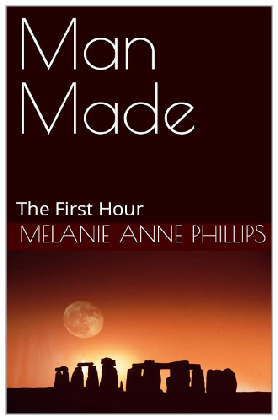Read the Science Fiction Thriller
From the founder of Storymind
Man Made follows a mysterious force as it sweeps around the globe erasing anything man made - from buildings, vehicles, and technology to medicines, clothing, and dental work.
Governments stagger under the panic, religions are at a loss for an explanation, scientists strive for any means to stop or divert the phenomenon, and the world’s population from families to individuals struggle to prepare for The Event, which will drive humanity back beyond the stone age.
The Event is coming.
Are you prepared?
~ Step 155 ~
Act One Beginning Chapters
So far in the Storytelling Stage you have developed a detailed independent progression for each of the four aspects of you novel (plot, characters, theme and genre).
While each aspect now has a good internal flow, the task in this section is to blend all four aspects together into chapters so they work in unison to create the progression of your novel as a whole.
To do this, gather together all the material you earmarked for your act one beginning sections into one list so you can easily see all that’s going at the beginning of your novel in your plot, characters, theme and genre all at once.
In reading over this list, you’ll probably discover that you can sub-divide all that material into subject matter categories. For example, some of the material may focus on a diamond robbery as it unfolds. Another group of elements may center on an argument between undercover cop, Tim, and his boss about how the crime should be investigated.
While both of these things belong in the beginning of act one, they really belong in two different chapters. And so, you might create two chapters as follows:
Chapter 1: The Diamond Robbery
Chapter 2: The Cops Disagree on Approach
Once you’ve named all the chapters you need,, distribute the elements from all four aspects of your story that your selected for the beginning of act one into those chapters where they best fit. You can always create new chapter categories if the need arises during the process.
Specific to Act One Beginning, novels often start with a "teaser," which is a gripping chapter that grabs your readers and draws them into the fictional world. This teaser may employ any number of story points or even incidental storytelling to excite the reader. For example, there may be an intriguing introduction of the Main Character, a thrilling action sequence, or an argument over moral issues among central characters.
No matter which elements you include or invent, be sure to pay special attention to the first chapter or scene, or you run the risk of losing your readers before your novel even gets started if the first chapter is too informational or too chaotic.
As you continue to build chapters for other sections of your novel, consider the use of flashbacks and flash forwards. Many stories are constructed to reveal story points in a different order to your readers than the order in which they happened to the characters.
A well-known example of this is the movie, "Pulp Fiction," which presents the action completely out of order, leaving it to the audience to reassemble the pieces into "character order" by the end of the story.
In an overall sense, the chapters in all of act one need to:
1. Grip the readers
2. Describe what the story is about
3. Introduce the characters
4. Set the mood
5. Outline the moral issues
6. Lead the plot to a major complication
For this step, refer only to the material you already selected for act one beginning including your plot, character, theme and genre elements. Read it through to determine the chapters into which you would like to sub-divide this material. Then, distribute all the story elements into the chapters you created.
If you have any material left over and can’t find a way to add it to any of the chapters, see if you can move those extra story points into act one middle or one of the other divisions of your story.
